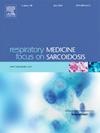hs- crp -甘油三酯葡萄糖指数与阻塞性睡眠呼吸暂停之间的关系:NHANES 2015-2018的一项研究
IF 3.1
3区 医学
Q2 CARDIAC & CARDIOVASCULAR SYSTEMS
引用次数: 0
摘要
背景:高灵敏度c反应蛋白-甘油三酯葡萄糖指数(CTI)作为一种综合胰岛素抵抗(IR)和全身炎症状态的双参数指标,已被证明具有优越的临床应用价值。然而,CTI与阻塞性睡眠呼吸暂停(OSA)风险之间的关系尚不清楚。因此,本研究旨在利用国家健康与营养检查调查(NHANES)数据库中的数据来调查这种关联。方法:基于2015-2018年NHANES数据进行分析。多变量逻辑回归分析用于研究CTI与OSA之间的关系,并通过限制性三次样条(RCS)回归、受试者工作特征(ROC)和亚组分析进一步探讨结果的一致性。结果:这项横断面研究(n = 3512)确定了CTI与OSA风险之间的显著正相关。完全调整显示,每个CTI单位的OSA风险增加14% (OR = 1.14, 95%CI 1.05-1.24),最高四分位数的风险增加1.35倍,最低四分位数的风险增加1.08-2.70。阈值分析显示出非线性动力学:CTI < 8.755,每单位OSA风险增加78% (p < 0.001),高于该阈值则增加19% (p = 0.024)。亚组分析证实了人口统计学上的一致关联。CTI在OSA鉴别方面优于hs-CRP和TyG (AUC = 0.597, 95%CI 0.578 ~ 0.615)。结论:本研究表明,CTI水平升高与OSA的风险相关,表明其作为OSA的生物标志物的潜在用途。本文章由计算机程序翻译,如有差异,请以英文原文为准。
Association between hs-CRP-triglyceride glucose index and obstructive sleep apnea: a study from NHANES 2015–2018
Background
High-sensitivity C-reactive protein-triglyceride glucose index (CTI) has demonstrated superior clinical utility as a dual-parameter indicator integrating both insulin resistance (IR) and systemic inflammatory status. However, the association between CTI and the risk of obstructive sleep apnea (OSA) remains unclear. Therefore, this study aimed to investigate this association utilizing data from the National Health and Nutrition Examination Survey (NHANES) database.
Methods
The analysis was based on data from the 2015–2018 NHANES. Multivariate logistic regression analyses were used to investigate the association between CTI and OSA, with additional exploration of the consistency of the results through restricted cubic spline (RCS) regression, receiver operating characteristic (ROC), and subgroup analyses.
Results
This cross-sectional study (n = 3512) identified a robust positive association between CTI and the risk of OSA. Full adjustment revealed 14 % increased OSA odds per CTI unit (OR = 1.14, 95 %CI 1.05–1.24), with the highest quartile demonstrating 1.35–fold elevated risk versus the lowest (95 %CI 1.08–2.70). Threshold analysis revealed nonlinear dynamics: CTI <8.755 showed 78 % OSA risk increase per unit (p < 0.001), versus 19 % increase above this threshold (p = 0.024). Subgroup analyses confirmed consistent associations across demographics. CTI outperformed hs-CRP and TyG in OSA discrimination (AUC = 0.597, 95 %CI 0.578–0.615).
Conclusion
This study demonstrates that elevated levels of the CTI are correlated with risk for OSA, indicating its potential utility as a biomarker for OSA.
求助全文
通过发布文献求助,成功后即可免费获取论文全文。
去求助
来源期刊

Respiratory medicine
医学-呼吸系统
CiteScore
7.50
自引率
0.00%
发文量
199
审稿时长
38 days
期刊介绍:
Respiratory Medicine is an internationally-renowned journal devoted to the rapid publication of clinically-relevant respiratory medicine research. It combines cutting-edge original research with state-of-the-art reviews dealing with all aspects of respiratory diseases and therapeutic interventions. Topics include adult and paediatric medicine, epidemiology, immunology and cell biology, physiology, occupational disorders, and the role of allergens and pollutants.
Respiratory Medicine is increasingly the journal of choice for publication of phased trial work, commenting on effectiveness, dosage and methods of action.
 求助内容:
求助内容: 应助结果提醒方式:
应助结果提醒方式:


